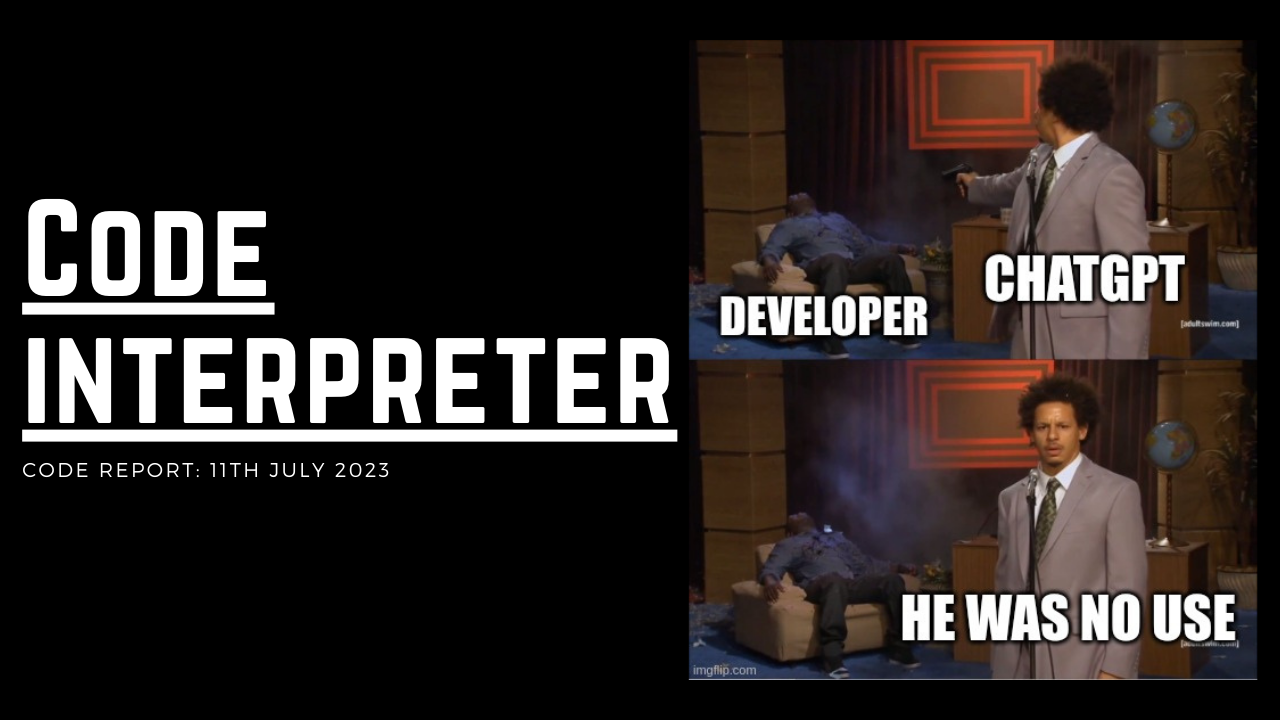It is July 11th, 2023, and amidst the belief that the AI hype was dying down, OpenAI surprised everyone by releasing a Code Interpreter to its 20 million subscription users. In this blog post, we will explore the implications of this new feature and its potential effects on programmers. We will also delve into its current capabilities by performing various tasks to gauge its limitations.
The Arrival of the Code Interpreter:
OpenAI’s recent announcement revealed that the Code Interpreter would be made available to all ChatGPT Plus users within the next week. This groundbreaking addition allows ChatGPT to run code, access uploaded files, analyze data, create charts, edit files, perform mathematical calculations, and much more. Plus users can easily opt in to enable this feature via the settings.
Code Interpreter will be available to all ChatGPT Plus users over the next week.
— OpenAI (@OpenAI) July 6, 2023
It lets ChatGPT run code, optionally with access to files you've uploaded. You can ask ChatGPT to analyze data, create charts, edit files, perform math, etc.
Plus users can opt in via settings. pic.twitter.com/IjH5JBqe5B
Current Capabilities:
As of now, the Code Interpreter primarily supports Python, along with a limited set of modules. However, it is expected that the technology will expand and encompass more programming languages in the future.
Task 1: DOS Attack
Initially, I attempted to create a DOS attack using ChatGPT, but the AI informed me that it is restricted from engaging in such activities. While the Code Interpreter possesses the power, there are safeguards in place to prevent malicious actions.
Task 2: Website Development
Next, I aimed to develop a website using Python. However, it became evident that the current support for website development is limited to Python with a restricted set of libraries within a sandbox environment. Therefore, creating a full-fledged website using the Code Interpreter proved to be challenging. Nevertheless, I discovered an unexpected advantage in using ChatGPT for dataset cleaning, which yielded impressive results. This newfound capability proves to be a valuable asset for data analysts.
Task 3: Creating and Using Regular Expressions
Regular expressions (regex) are a vital tool for filtering and manipulating data. Initially, ChatGPT faced challenges in generating accurate regex patterns, similar to human programmers. However, with a few attempts and iterations, the code gradually improved. Witnessing this significant improvement was astonishing, emphasizing the potential impact of the Code Interpreter in simplifying complex tasks.
Conclusion:
The introduction of OpenAI’s Code Interpreter marks another technological leap forward, carrying both promises and concerns. While the growing capabilities of AI raise questions about the future of traditional programmers, only time will reveal the true extent of its influence. As these technologies evolve and become faster and more efficient, our world is on the cusp of transformation once again. In the face of these changes, we must adapt and embrace the opportunities that lie ahead.
Thank you for reading this blog post. Stay tuned for more updates and insights in the future. ❤️❤️
Credit:
This article was written by Abdul Rafay and published on Future Insight.
Contact Us:
If you encounter any issues or have any questions regarding any of the articles on this website, please do not hesitate to contact the website’s support team. Your feedback is important and the team is dedicated to providing prompt and effective assistance to ensure a positive user experience.
To access the contact page, simply click on the “Contact” tab in the navigation menu or visit the following URL: contact page. From there, you can fill out a contact form or find additional information on how to get in touch with the support team.
Don’t let any questions or concerns go unanswered - reach out to the support team for help and guidance. They are committed to providing excellent customer service and will do everything possible to ensure that you have a seamless experience on the website.
Thumbnail
